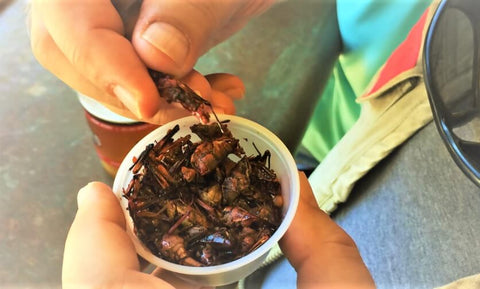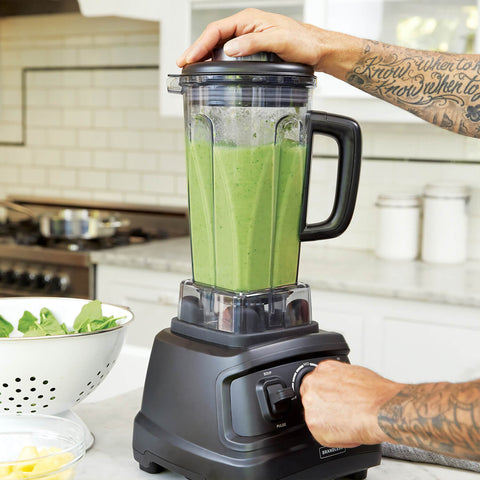Humans are hard wired for sugar. Fruit, pastries, soda pop – it starts when sugar molecules bind to taste receptors on your tongue. Then, there’s a sense of pleasure, as your brain lights up with a flood of dopamine and serotonin. And, for the moment, sugar is amazing.
But, here’s the kicker. Eventually that sugar rush comes crashing down, contributing to cavities, obesity, and diabetes. Yet, still you crave the sweet stuff.
The problem is that we have an evolutionary mismatch.
The Ancestral Root to Our Sweet Tooth
At one point in time, the taste for sugar kept us alive. Our distant primate relatives would swing in the forest canopy, searching for sweet, ripened fruit, which provided more energy and water than bitter, unripened fruit. Bitter or sour tastes could signal poisonous or inedible foods. So, the preference for sweet, sugary foods developed as an evolutionary trait to keep our ancestors alive.
But this same evolutionary trait that helped our ancestors survive for thousands of years, today puts us at risk for multiple chronic diseases, and shortened longevity.
That’s because, although our palates have remained likely unchanged for hundreds of thousands of years, our culture and agricultural practices have changed dramatically over the past 100 years. We no longer move throughout the day, hunting and foraging for food. Instead, sugar is cheap, plentiful, and easily added to foods ad nauseam.
Today, we live in a very different world than our ancestors, a world in which tastes can be deceiving. Rather than seeking out sweet foods for survival, sweetness might better signal caution given the abundance of sugar.
Fortunately, for the cautious connoisseur, there are a variety of natural sweeteners without sugar that you can use to trick your taste buds, while minimizing the metabolic effects of sugar.
The Best Natural Sweeteners Without Sugar
The following is a list of the top-tier natural sweeteners, with a brief description of their benefits, and taste profile. If you’re having trouble tempering your sweet tooth, try one of the following alternatives.
Allulose
Allulose is one of the newest low-calorie sweeteners on the market. With the same taste and texture of sugar, and no after taste, it’s rising in popularity.
Allulose is considered a “rare sugar” because it’s naturally found in small amounts in a limited number of foods, like figs, wheat, and raisins. It’s also called D-psicose, and it has the same chemical makeup of fructose, but a slightly different structure. As a result, it maintains a similar taste quality to sugar, without the same metabolic effect because, like erythritol, our bodies are unable to metabolize allulose for energy.
To produce allulose, manufacturers take fructose from corn and other plants, and then expose it to an enzyme that converts the fructose structure into D-psicose.
Calories and Carbs in Allulose
Allulose carries about one tenth the calories of table sugar, or about 0.2-0.4 calories per gram. Since it’s indigestible, the net carbs are also zero. Allulose is similar to erythritol because it is primarily absorbed into the blood stream and it does not raise blood glucose or insulin. Studies suggest it has the potential to lower the glycemic response to maltodextrin, and reduce the elevation in blood sugar that occurs after a meal.
Allulose Digestibility
In small amounts, allulose should not cause any digestive discomforts, which makes it a favorable sugar substitute to sugar alcohols like xylitol, and maltitol. If consumed in large quantities, it can cause bloating and gas however. Also, since it’s a relatively new natural sweetener, there is little research that’s been done on the long-term effects of allulose, and how it may affect the microbiome.
Allulose Taste
Allulose is a favorable natural sweetener because it has a remarkably similar flavor to sugar, without any funky after taste. It’s also about 70% as sweet as table sugar, so serves as a pretty simple sugar substitute, that you can trade spoon for spoon, while tapering your sweet tooth.
Monk Fruit
This is a sweetener of several monikers. It’s also sometimes called lo han guo, or Buddha fruit, but it originates from the vines of the siraitia grosvenorii plant, which is native to Southeast Asia. It’s first recorded usage was with monks living in 13th century China, where it’s been used for centuries as a traditional medicine, and low-calorie sweetener.
The sweetener comes from the pulp and juice inside this small brown gourd. Juice is collected then dried into a concentrated powder that, like Stevia, is 200-300 times sweeter than sugar.
Calories and Carbs in Monk Fruit
Monk fruit naturally does contain fructose and glucose, but when it’s processed the sugars are removed, and the remaining extract contains mogroside. Mogroside is the compound responsible for monk fruit’s no-calorie sweetness.
Since monk fruit contains zero sugars, and zero calories, it does not increase blood sugar levels. In a study done on diabetic mice, mogroside extract actually decreased blood sugar levels, and increased HDL, the “good” cholesterol. The decrease in blood sugar levels could be due to mogroside’s insulin stimulating effects, although this has not been tested in humans.
Like stevia, monk fruit is often blended with sweeteners. So, if your using it as a sugar substitute, check your label to see what they’re mixing it with. If it’s dextrose or maltodextrin, it will cause an increase in blood sugar. It’s also often combined with erythritol, which will not affect blood sugar.
Monk Fruit Digestibility
Monk fruit, by itself, typically does not cause people many belly aches. But, as suggested previously, you need to look at the label to see what other ingredients it may be mixed with. If it’s mixed with a sugar alcohol like xylitol or maltitol, it can cause digestive issues like diarrhea, gas and bloating.
Monk Fruit Taste
Most people find monk fruit to have a fruity taste and describe it as less bitter than other natural sweeteners, like Stevia. Like most sugar-free sweeteners though, some people do notice a slight aftertaste. But, overall, it tends to have a milder taste and is often preferred to other more popular sugar substitutes.
Keep in mind, like stevia, monk fruit is extremely sweet. So, start small and adjust to find the appropriate level of sweetness.
Stevia
Stevia is one of the most popular natural sweeteners on the market, and it comes from the leaves of a South American plant called stevia rebaudiana. Stevia is about 300 hundred times sweeter than sugar, so if you’re using it as a substitute, start small. If a recipe calls for 1 cup of sugar, 1 tsp of Stevia will probably be fine. However, you’ll want to follow the manufacturers recommendations, since each stevia product can vary by brand.
Calories and Carbs in Stevia
Stevia, in its pure form has zero carbohydrates, and zero calories. However, most stevia products combine stevia leaf extract with other ingredients such as dextrose, maltodextrin, erythritol or other fillers to help reduce the sweetness of stevia and mimic the taste of sugar. So, if you’re using a stevia-based substitute that’s combined with dextrose or maltodextrin you’ll still be getting some carbs and calories, and your sugar substitute will still influence your blood sugar.
Without sugar additives, Stevia will not increase blood sugar and one study has shown it can actually decrease blood sugar for those with type 2 diabetes, after a meal. At low doses, studies also suggest stevia can have anti-inflammatory and anti-oxidative benefits.
Stevia Digestibility
As for digestibility, most people tolerate stevia well, unless the product has been mixed with a sugar alcohol like maltitol. In that case, people often experience diarrhea, and bloating.
Stevia Taste
It’s hard to find a sweetener that’s a perfect taste replacement for sugar, and some people find that stevia has a metallic and bitter after-taste. Since it’s about 300 hundred times sweeter than sugar, it’s also a bit too easy to over sweeten things by accident.
Erythritol





